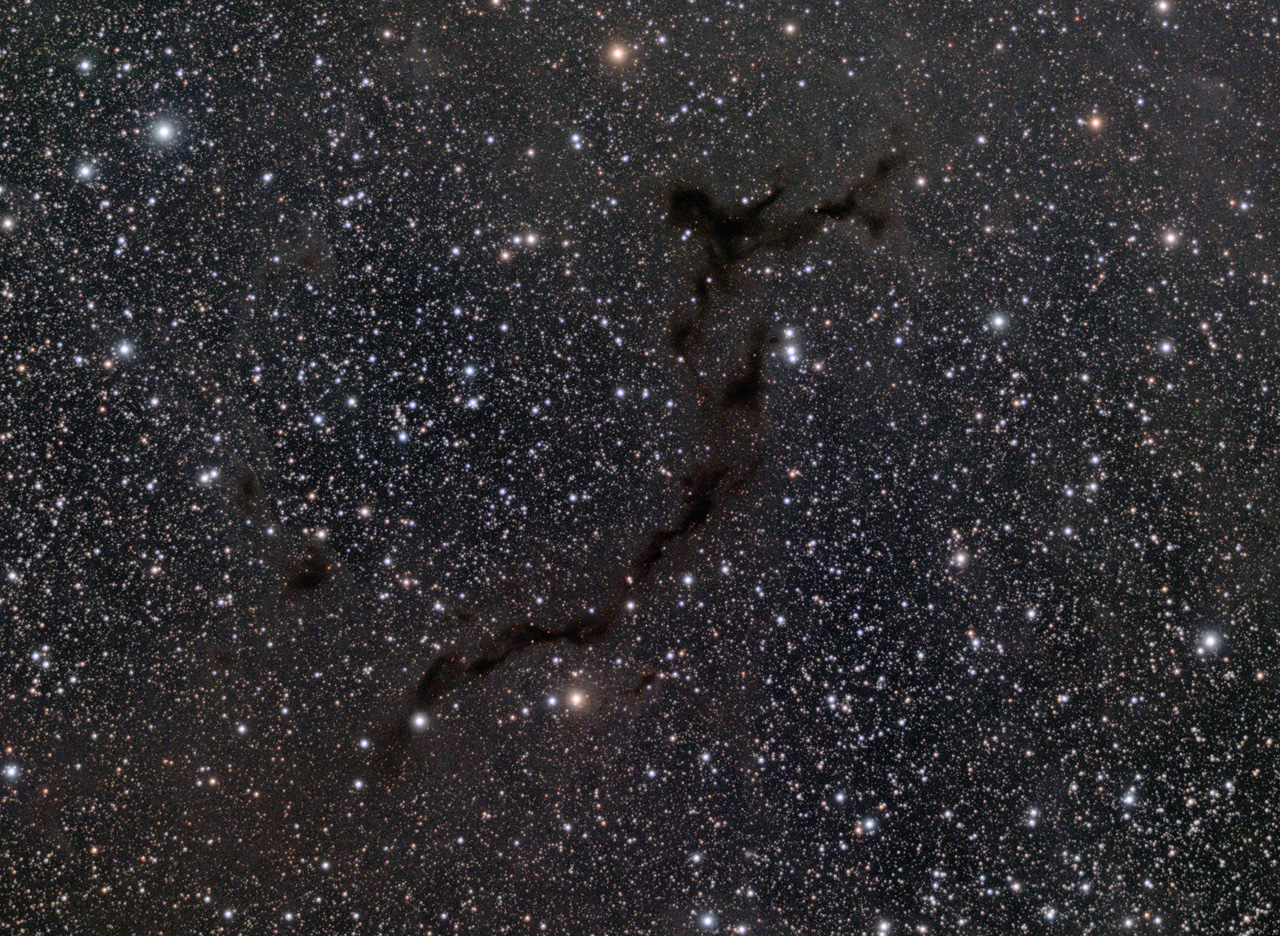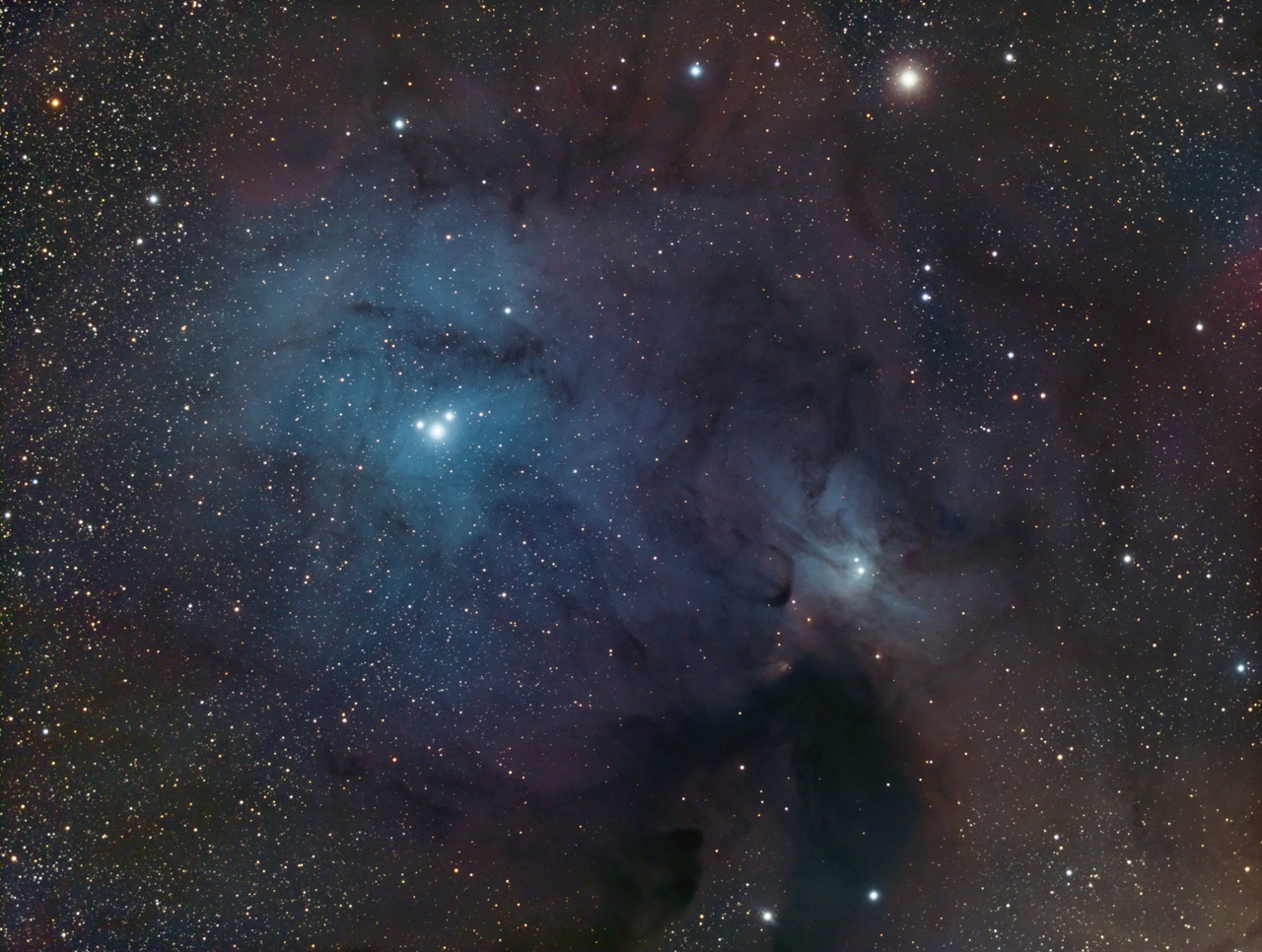Here is another image from the recent star party, the “Seahorse Nebula”, also known as Barnard 150. It is a dark nebula, meaning that the shape is defined by a cloud of dense dust that blocks light from the stars behind it (a silhouette). It is located in the constellation Cepheus, but I don’t know how far away it is.
This was captured with a Stellarvue SVX80T with a focal reducer (for an effective focal length of 355mm and focal ration of f/4.44), and cropped a bit. Seeing was very good for the 2 nights I captured this target. I was shooting the other target, Rho Ophiuchi, for the first part of the night, then switching to this around 12:30 to 1:00AM when Rho Oph got too low in the sky. I stopped the B150 capture when the sky started getting light from the morning sun, around 3:30, which (conveniently) was also the time B150 crossed the meridian. The image is made up of about 120 luminance exposures of 60 seconds each (2 hours), and 40 exposures of 120 seconds for each of red, green, and blue. Pre-processing was done in CCDstack2, and post-processing in Photoshop. There was no need for gradient removal, and I did not use any noise reduction. The f/4.44 focal ratio is very fast, allowing for relatively short exposures.
The Seahorse was suggested to me by my friend, Curtis, who also told me about a new software tool for gradient removal, which prompted me to go back and re-process the Rho Ophiuchi image, since it really needed gradient removal. Whenever a target is close to the horizon you are likely to get some gradients in the image (especially in a wide-field image) because the intensity of Earth-based light pollution increases as you get closer to the horizon. Gradient removal software analyzes the background (black) levels at various points in the image to determine the characteristics of the gradient (which is not entirely linear), and applies an inverse correction. This affects both the relative brightness and color across the full field. Here is the re-processed, “improved” version of Rho Oph:
The darker blue regions look a little purple to me, but overall, I think the colors are pretty accurate here – certainly much better than the earlier version. In this version you can clearly see the reddish dust in various places around the blue areas, and especially in the lower right corner. This is the same dust that looks blue in other areas, where it is brightly illuminated by young, hot blue stars.

